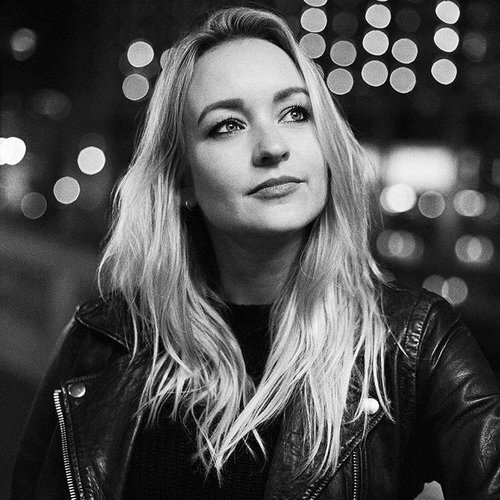You might think that worrying about sound quality is for self-styled audio nerds: something podcasters or music production types get obsessive about, but not something that matters much to other creators. But in fact, sound is a crucial component of videos as well as podcasts. If yours sucks, it won’t matter how beautiful your lighting (or your face) is — no one’s gonna take you seriously.
Getting good sound in any medium requires two phases. First, you have to record something as cleanly as you can, using proper mics in a quiet space. Even if you’re recording voiceovers to air with your footage, you’ll want to be mindful about where and how you do it.
But then you’ll want to go into post-production mode and use a few simple tools to make it even better. You know how videographers buy expensive cameras, rent out a space, put up lighting, and still go in for some color correcting (and maybe a little light FaceTune) after the fact? Think of it like that. Nothing gets captured so perfectly the first time that it can’t be improved upon in post. And if you’re adding a bunch of different audio clips together from different sources, you’ll definitely need to make sure they’re nicely married so transitions aren’t jarring.
The two most important tools for editing video sound are compression and EQ. Most video editing software has some version of them built in (including Descript, natch). You can find plenty of online tutorials about how to compress and equalize sound, but what are you doing, and why? Here’s our no-nonsense, simple concept, medium-to-small words guide to getting the best quality out of your sound.
What is EQ?
EQ stands for equalizing, and it’s about picking out specific frequencies in a noise — the harsh high notes of the s at the end of the word, or the low rumble of a refrigerator running in the background — and making them more or less prominent, as the situation demands. Equalizing could be used to emphasize the higher, brighter notes in someone’s voice that a microphone didn’t pick up that well, or to dampen down the acoustics in a particularly lively room. It shapes the tone of a sound, and is important for clarity — this is how you emphasize and de-emphasize so that your sound is precise, instead of cluttered and muddy.
Types of EQ
There are several types of equalizer tools; you’ll probably end up using some combination of the below on everything you record:
Graphic EQ
This is the kind of equalizing you’re most likely to have done at some point in your life already. You know when your stereo comes with knobs labeled for bass and treble? When you turn those up and down, you’re EQing the sound those speakers produce — albeit very roughly. A graphic equalizer made for audio editing will likely come with 31 pre-set bands, each of which encompasses about 1/3 of an octave, and can be turned up or down. Graphic EQ is most often used in live-sound situations where you want to be able to grab a bunch of frequencies and adjust them quickly — microphone feedback is the perfect example — but it can be useful as you get to know your way around the world of editing recorded audio, too.
Parametric EQ
A parametric EQ, meanwhile, asks you to set the bandwidth of the frequency you want to manipulate, so it could be a third of an octave or much less than that. Then it allows you to boost or cut that frequency the same way you would with a graphic EQ. Same method, different level of granularity, basically: a parametric EQ gives you much more fine-grained control of the sound. Descript comes with a 5-band parametric EQ, which allows you to customize to your heart’s content; you can also get started by experimenting with presets that allow you to equalize for depth and body, as well as airiness, and even intimacy with our Fireside Chat option.
Shelving EQ
Whereas the changes you make with graphic or parametric equalizers can be a bit harsher, a shelving EQ is a smoother, more musical way of editing sound. When you apply a shelf equalizer, it goes to work on a broader range of frequencies than a parametric or graphic EQ. That’s what gives the shelving EQ its name: when graphed, it looks like a long, flat shelf. There are two types of shelving equalizers: high-shelf, which is for high-end frequencies in your audio, and low-shelf, which… you can probably guess is for low-end frequencies. Whether you’re working with high- or low-shelf equalizer, you can either boost or cut the frequencies you’ve selected. Just remember: a shelving EQ isn’t surgical, like a parametric — it’s best suited to a noise that carries through your entire recording, and needs a consistent tweak all the way through.
Linear Phase EQ
Okay, we said small-to-medium words, but this one is unavoidably a little complicated. Remember the parametric equalizer tool, above? Well, the linear phase EQ is basically that, with one extra trick. When the parametric equalizer does its thing, there’s what’s called a smearing effect: the frequency that’s been edited gets just slightly out of phase with the rest of the sound. Now, that’s not always a problem! It’s not very noticeable to our ears, and even when it is, it can sound organic and pleasant. After all, in real life, sound often comes at us in a messy blur. But if you’re mastering an entire podcast, linear phase EQ can come in handy for nudging those frequencies back in phase — you might not want to apply that smear across your entire aural canvas, so to speak.
Dynamic EQ
Last but not least, the Dynamic EQ. It functions sort of like a parametric EQ, allowing you to pick out a certain frequency to manipulate. But instead of just applying every time that frequency shows up, a dynamic EQ kicks in whenever you go above or below your target frequency. Then it either boosts or cuts your sound. It works sort of like a compressor — more on that below.
What is compression?
A compressor does what the name suggests: it normalizes the volume of your tracks by pushing all of your sound into a smaller range of loudness. That way, it matters less if one person is a little too far from a mic, or their conversation partner has a VERY OUTDOOR VOICE.
Whereas an equalizer works on certain frequencies, a compressor is attuned to decibels (dB), or Loudness Units to Full Scale (LUFS). We’ll mostly use decibels below for simplicity’s sake, but you might end up measuring with either, depending on your tech and the situation.
One note before we begin: to minimize how much you have to use a compressor, it’s important to monitor volume level as you record. Something that seems audible through your headphones might not be registering as well with a microphone, and could get lost when you hear it in playback. You might also just have two very different levels from two very different microphones or room setups, so always see what’s registering and adjust as you go.
Types of compression
Regardless of your recording setup, you’ll inevitably want to make a few adjustments after the fact, too. And just as with equalizing, there are a number of types of compressors you should be familiar with.
Compressor vs. Limiter
The first is the difference between a compressor and a limiter. A compressor looks at everything in the audio signal above or below a certain decibel threshold and either quiets or loudens it so that it fits into a smaller range of loudness. It does this via a ratio — so if you set your compressor at 2:1, for every two decibels over your limit it goes, its sound will be reduced by one decibel. The sound can still get quite loud, just not as loud as it originally did. A limiter, on the other hand, sets such a high ratio that almost nothing goes over that limiting decibel level. If you want to set an absolute ceiling, you can use a brickwall limiter, which sets its ratio at infinity:1. The brickwall limiter is a powerful force, but a blunt one; its effect can be really flattening, so use with care.
Multiband compression
A regular compressor works on everything at once: if it senses a sound above a certain threshold, it will bring that sound’s volume down. But a multiband compressor allows you to split a single track into multiple frequency bands and compress each band differently. In that way, it’s like an equalizer and a compressor combined.
Lookahead compression
One of a compressor’s settings is its attack: basically, how fast and furious it comes at a sound that’s outside of its range. A fast attack time won’t always catch everything, and it can create an abrupt, unnatural drop in volume. A lookahead compressor can peer around a corner to see what’s coming, volume-wise, and start applying its turn-down ratio a bit early for a more natural transition.
Sidechain compression/ducking
Sidechain compression, or ducking, allows you to link two audio clips together and tell the compressor to quieten one down when the other is playing. It’s most commonly used for voiceovers played over music — whenever the person is speaking, the music quiets down, only to swell up and take over during longer pauses.
So which comes first: EQ or compression?
Ah yes, one of the age-old questions. The chicken or the egg? Do you wash your hair or body first? Should you start by compressing or equalizing a raw track? We wish we could give you a straight answer, but unfortunately, this is another it’s complicated situation.
But there are a few things to know that can help you decide what’s right for your situation. Whether you EQ or compress audio first in your workflow depends not only on personal taste but also the state of the audio itself. Many engineers begin by equalizing so they can take out any unwanted frequencies — that way, the compressor won’t be busy working on something that they’re going to eliminate anyway.
On the other hand, if you want more precise control over the tone of your finished product, you might use the equalizer after compression to highlight (and downplay) various facets of the audio. Generally speaking, EQing first means you end up with a warmer, rounder tone, whereas starting with a compressor means your sound will come out sparkling clean — but can be a little tight, with less dynamic range.
Luckily, this isn’t necessarily an either/or situation! You can also make several passes at the track, trading back and forth between compressing and EQing, to make sure that your sound comes out exactly how you want it. You may only get a few takes when you’re shooting, but in the edit bay, you can noodle around for as long as it takes — just don’t get lost in all the options and linger there forever.











































